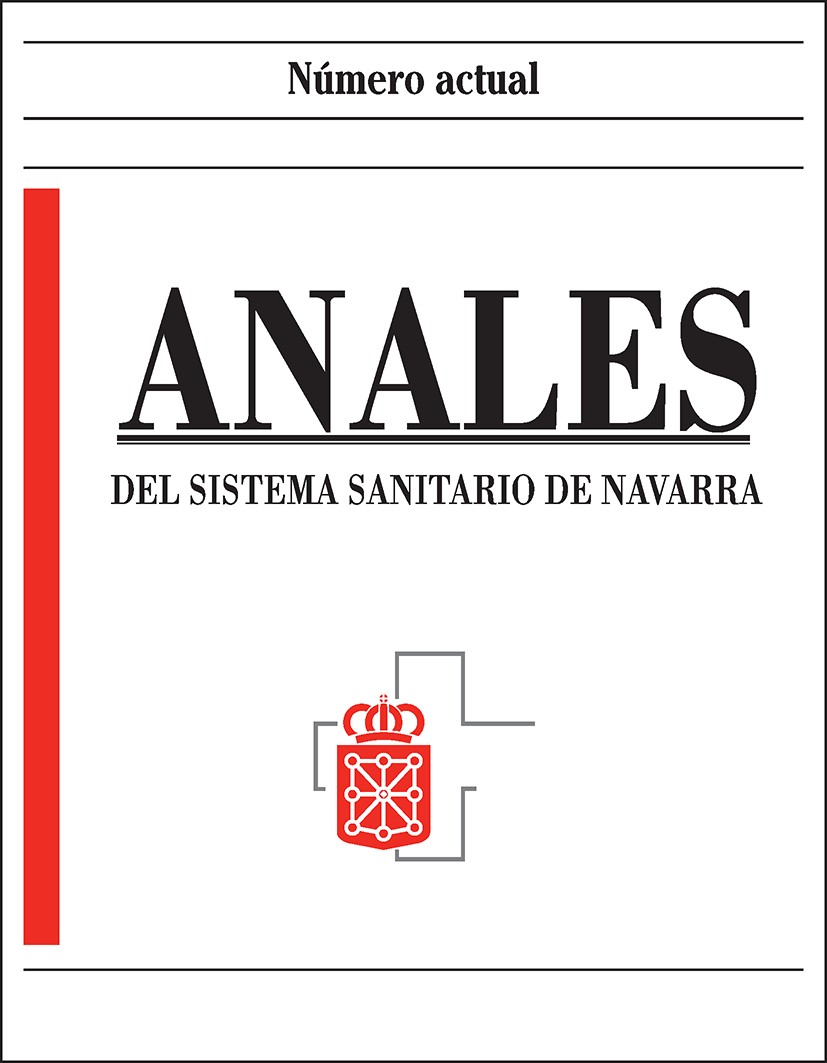Health for whom? Intersectionality and biases in the use of artificial intelligence in clinical diagnosis
DOI:
https://doi.org/10.23938/ASSN.1077Keywords:
Evauación de tecnologías sanitariasDownloads
References
BERMUDEZ-TAMAYO C, JIMENEZ-PERNETT J. Inteligencia artificial para el avance de los sistemas de salud. Posibles aportes y retos. Revista de Derecho de la Seguridad Social Laborum 2022; 4(especial): 401-414. https://revista.laborum.es/index.php/revsegsoc/article/view/641/735
PEIRÓ, S. El futuro de la salud pública tras la pandemia. Una ventana de oportunidad. An Sist Sanit Navar 2023; 46(2): e1045. https://doi.org/10.23938/ASSN.1045
MURPHY K, DI RUGGIERO E, UPSHUR R, WILLISON D, MALHOTRA R, CAI J. Artificial intelligence for good health: a scoping review of the ethics literature. BMC Med Ethics 2021; 22(1):14. https://doi.org/10.1186/s12910-021-00577-8
MILLER, D, BROWN E. Artificial intelligence in medical practice: The question to the answer? Am J Med 2018; 131(2): 129-133. https://doi.org/10.1016/j.amjmed.2017.10.035
CIRILLO D, CATUARA-SOLARZ S, MOREY C, GUNEY E, SUBIRATS L, MELLINO S et al. Sex and gender differences and biases in artificial intelligence for biomedicine and healthcare. NPJ Digit Med 2020; 3: 81. https://doi.org/10.1038/s41746-020-0288-5
MILLER T. Explanation in artificial intelligence: Insights from the social sciences. Artif Intell 2019; 267: 1-38. https://doi.org/10.1016/j.artint.2018.07.007
PALACIOS BAREA MA, BOEREN D, FERREIRA GONCALVES JF. At the intersection of humanity and technology: a technofeminist intersectional critical discourse analysis of gender and race biases in the natural language processing model GPT-3. AI & Soc 2023. https://doi.org/10.1007/s00146-023-01804-z
WILSON Y, WHITE A, JEFFERSON A, DANIS M. Intersectionality in clinical medicine: The need for a conceptual framework. Am J Bioeth 2019; 19(2): 8-19. https://doi.org/10.1080/15265161.2018.1557275
NASIR S, KHAN RA, BAI S. Ethical framework for harnessing the power of AI in healthcare and beyond. IEEE Access 2023; 12: 31014–31035. https://doi.org/10.1109/ACCESS.2024.3369912
ASHOKAN A, HAAS C. Fairness metrics and bias mitigation strategies for rating predictions. Information Processing & Management 2021; 58(5): 102646. https://doi.org/10.1016/j.ipm.2021.102646
GARCÍA MOCHON L, OLRY DE LABRY LIMA A, BERMUDEZ TAMAYO C. Prioritization of non-recommended clinical activities in Primary Care. An Sist Sanit Navar 2017; 40(3): 401-412. https://doi.org/10.23938/ASSN.0120
CISTON S. Intersectional artificial intelligence is essential: Polyvocal, multimodal, experimental methods to save AI. J Sci Technol Arts 2019; 11(2): 3–8. https://doi.org/10.7559/citarj.v11i2.665
O’CONNOR S, LIU H. Gender bias perpetuation and mitigation in AI technologies: challenges and opportunities. AI & Soc 2023. https://doi.org/10.1007/s00146-023-01675-4
BUSLÓN N, CORTÉS A, CATUARA-SOLARZ S, CIRILLO D, REMENTERIA MJ. Raising awareness of sex and gender bias in artificial intelligence and health. Front Glob Womens Health 2023; 4: 970312. https://doi.org/10.3389/fgwh.2023.970312
ABRÀMOFF MD, TARVER ME, LOYO-BERRIOS N, TRUJILLO S, CHAR D, OBERMEYER Z et al. Considerations for addressing bias in artificial intelligence for health equity. NPJ Digit Med 2023; 6: 170. https://doi.org/10.1038/s41746-023-00913-9
SEYYED-KALANTARI L, ZHANG H, MCDERMOTT MBA, CHEN IY, GHASSEMI M. Underdiagnosis bias of artificial intelligence algorithms applied to chest radiographs in under-served patient populations. Nat Med 2021; 27(12): 2176-2182. https://doi.org/10.1038/s41591-021-01595-0
LEWIECKI EM, WRIGHT NC, SINGER AJ. Racial disparities, FRAX, and the care of patients with osteoporosis. Osteoporos Int 2020; 31, 2069-2071. https://doi.org/10.1007/s00198-020-05655-y
KAHNEMAN D. Thinking, Fast and Slow. New York: Farrar, Straus and Giroux, 2011.
DOMINGUEZ-CATENA I, PATERNAIN D, GALAR M. Metrics for dataset demographic bias: A case study on facial expression recognition. IEEE Trans Pattern Anal Mach Intell 2024; 1-18. https://doi.org/10.1109/TPAMI.2024.3361979
BERMÚDEZ-TAMAYO C, DE LABRY-LIMA AO, GARCÍA-MOCHÓN L. No hacer: de las recomendaciones a la acción. An Sist Sanit Navar 2019; 42(1): 105-108. https://doi.org/10.23938/ASSN.0380
THOMASIAN NM, EICKHOFF C, ADASHI EY. Advancing health equity with artificial intelligence. J Public Health Pol 2021 Dec 1; 42(4): 602-611. https://doi.org/10.1057/s41271-021-00319-5
ROCHE C, WALL PJ, LEWIS D. Ethics and diversity in artificial intelligence policies, strategies and initiatives. AI Ethics 2022; 3: 1095-1115. https://doi.org/10.1007/s43681-022-00218-9
MEZGÁR I, VÁNCZA J. From ethics to standards: A path via responsible AI to cyber-physical production systems. An Rev Control 2022; 53: 391-404. https://doi.org/10.1016/j.arcontrol.2022.04.002
LEHOUX P, RIVARD L, DE OLIVEIRA RR, MÖRCH CM, ALAMI H. Tools to foster responsibility in digital solutions that operate with or without artificial intelligence: A scoping review for health and innovation policymakers. Int J Med Inform 2023; 170: 104933. https://doi.org/10.1016/j.ijmedinf.2022.104933
Organization for Economic Co-operation and Development. The state of implementation of the OECD AI Principles four years on. OECD Artificial Intelligence Papers No. 3. Paris: OECD Publishing, 2023. https://doi.org/10.1787/dee339a8-en
MOLLURA DJ, CULP MP, POLLACK E, BATTINO G, SCHEEL JR, MANGO VL et al. artificial intelligence in low- and middle-income countries: Innovating global health radiology. Radiology 2020; 297(3): 513-520. https://doi.org/10.1148/radiol.2020201434
WESSON P, HSWEN Y, VALDES G, STOJONOWSKI K, HANDLEY MA. Risks and opportunities to ensure equity in the application of big data research in public health. Annu Rev Public Health 2022; 43: 59-78. https://doi.org/10.1146/annurev-publhealth-051920-110928
OBASA AE, PALK AC. Responsible application of artificial intelligence in health care. South African Journal of Science 2023; 119(5-6): 1-3.
SUJAN M, SMITH-FRAZER C, MALAMATENIOU C, CONNOR J, GARDNER A, UNSWORTH H et al. Validation framework for the use of AI in healthcare: overview of the new British standard BS30440. BMJ Health Care Inform 2023; 30(1): e100749. https://doi.org/10.1136/bmjhci-2023-100749
Downloads
Published
How to Cite
Issue
Section
License

This work is licensed under a Creative Commons Attribution-ShareAlike 4.0 International License.
La revista Anales del Sistema Sanitario de Navarra es publicada por el Departamento de Salud del Gobierno de Navarra (España), quien conserva los derechos patrimoniales (copyright ) sobre el artículo publicado y favorece y permite la difusión del mismo bajo licencia Creative Commons Reconocimiento-CompartirIgual 4.0 Internacional (CC BY-SA 4.0). Esta licencia permite copiar, usar, difundir, transmitir y exponer públicamente el artículo, siempre que siempre que se cite la autoría y la publicación inicial en Anales del Sistema Sanitario de Navarra, y se distinga la existencia de esta licencia de uso.








